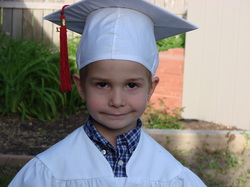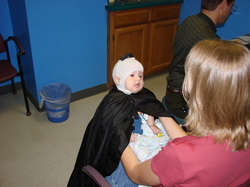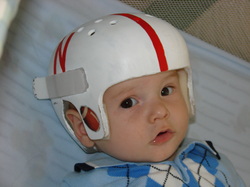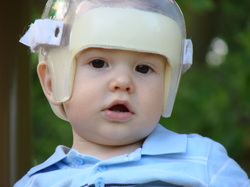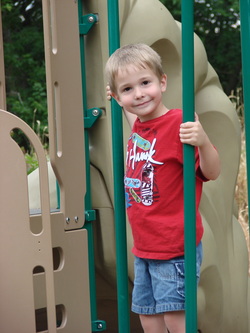Ryan's Story
By the time we reached Ryan's 2 month check-up, the back part of his head was becoming quite pronounced. After questioning the pediatrician about it, x-rays were ordered and I was assured that there were non-surgerical ways of fixing this. My heart sank though at even the thought that surgery could be a possibility. When the results came back positive for sagittal synostosis I immediately felt the need to find out everything I could about it.
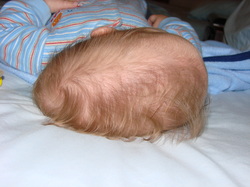
I began reading everything I could possibly find about this new term I had learned. The internet is an amazing thing! Though there is a lot of useless information out there, I was able to research and find out so much about my son's condition. What I was able to find out was that, first of all, surgery was the ONLY option. And there were three surgery options available. The first was the traditional cranial vault reconstruction, which involves the plastic surgeon (PS) and neurosurgeon (NS) working together as a team, removing the skull cap and redesigning it. The second was a relatively new approach in which the PS and NS with the use of an endoscope removed the part of the skull that had fused, then with the use of a series of helmets over time reshaped the head. The third, also a newer surgery, was the spring mediated surgery in which the section of fused bone is removed and replaced with a spring to help do the reshaping.
In the end, after talking with someone locally whose son had undergone the same procedure several years prior, we chose to go with the endoscopic strip craniectomy. The downside to this was that it was not being done locally. It would involve traveling out of state to San Antonio, TX and for several trips. It would also involve the need for my son to wear specially designed helmets for several months.
In the end, after talking with someone locally whose son had undergone the same procedure several years prior, we chose to go with the endoscopic strip craniectomy. The downside to this was that it was not being done locally. It would involve traveling out of state to San Antonio, TX and for several trips. It would also involve the need for my son to wear specially designed helmets for several months.
Plans were made and on August 14, 2006 Ryan had his surgery. It is so hard handing your baby over to the doctors and so hard not to fear the worst. Five years later now I honestly don't remember how long the surgery was. But I remember sitting in the lobby anxiously waiting for the phone call telling me that they were done and that everything went well. Thankfully it did go well.
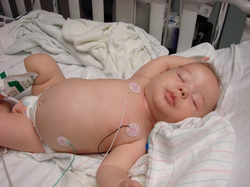
The amazing thing to me about this surgery option is that, assuming all goes to plan, they are released from the hospital the next day. So late Friday morning, we packed up and headed back to the Ronald McDonald house to rest. For pain management, Ryan was prescribed ibuprofen and acetaminophen to be given regularly over the next few days. Before we even left the hospital he was more or less acting like himself. And by Monday, what little swelling had been there was down and he was ready to be scanned for his first helmet.
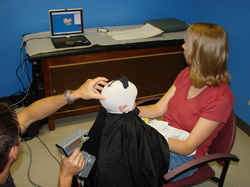
Ryan went through a series of four different helmets over the next 15 months. His was considered severe so I don't know if this is the norm or due to the severity of his head shape malformation. We have been very pleased with the results of the entire process. Ryan is an incredibly cute little boy (though admittedly I'm a bit biased) and I don't think looking at him today anyone would ever be able to tell that he ever had surgery.
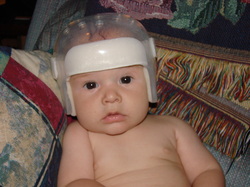
Today, Ryan is a happy, healthy, "normal" (whatever that means), five year old little boy looking forward to starting kindergarten in the fall. I am very proud of him and willing to share his story with anyone that may benefit from it.
